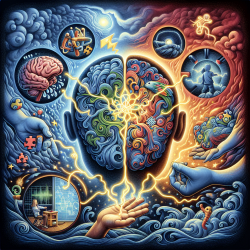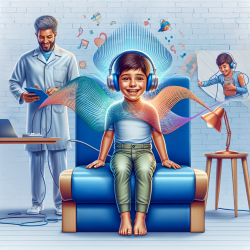The relationship between autonomic dysfunction and autism spectrum disorders (ASD) has been a subject of growing interest in recent years. A recent study titled Evaluation of sympathetic sudomotor responses to auditory stimuli in children with autism spectrum disorders sheds light on this complex interaction. This blog will help practitioners understand the key findings and implications of this study to improve therapeutic outcomes for children with ASD.
Key Findings from the Study
The study assessed sympathetic sudomotor responses (SSR) to auditory stimuli in children with ASD and typically developing (TD) children. The results indicated significant differences in SSR indices between the two groups:
- Slower Habituation: Children with ASD exhibited significantly slower habituation to auditory stimuli compared to TD children.
- Higher Latent Period: The latent period was statistically significantly higher in children with ASD.
- No Significant Difference in Amplitude: There was no significant difference in amplitude values between the groups.
These findings suggest that children with ASD have a persistent state of sympathetic nervous system activation, which may contribute to their atypical emotional and behavioral traits.
Implications for Practitioners
Understanding these physiological differences can guide practitioners in tailoring their therapeutic approaches. Here are some actionable insights:
- Monitor Sympathetic Activity: Regular monitoring of SSR can provide valuable insights into the autonomic state of children with ASD, helping to tailor interventions more effectively.
- Individualized Therapy: Given the slower habituation to auditory stimuli, therapies that gradually introduce auditory challenges could help children with ASD adapt better over time.
- Focus on Reducing Sympathetic Over-Arousal: Techniques such as biofeedback and mindfulness can be integrated into therapy to help reduce sympathetic over-arousal and improve overall well-being.
Encouraging Further Research
While this study provides valuable insights, more research is needed to fully understand the link between autonomic dysfunction and ASD. Practitioners are encouraged to participate in or support further studies to explore:
- The underlying mechanisms in the central and peripheral nervous systems contributing to atypical SSR in ASD.
- The potential of SSR as a biomarker for early diagnosis and monitoring of therapeutic outcomes.
- The efficacy of various therapeutic interventions aimed at modulating autonomic function in children with ASD.
To read the original research paper, please follow this Evaluation of sympathetic sudomotor responses to auditory stimuli in children with autism spectrum disorders.










